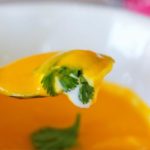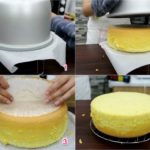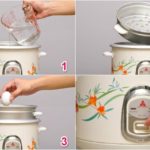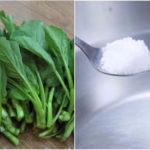Xôi is a traditional dish loved by many in Vietnam and is often served during special occasions. However, cooking delicious xôi is not an easy task, and many people encounter issues such as mushy, undercooked, or dry and tasteless xôi. So, which cooking method is best: a rice cooker, pressure cooker, or steamer? Let’s compare the pros and cons of each method to help you choose the right one.
1 Rice Cooker Method
Using a rice cooker to cook xôi is the most popular and convenient method today. Rice cookers save time and effort, and they produce relatively tasty xôi. However, there are some drawbacks to this method.
Related:
Advantages of Cooking Xôi in a Rice Cooker
-
Convenient: The most notable advantage is convenience. Rice cookers automatically cook the xôi without constant monitoring, saving you time and effort, especially if you have a busy lifestyle.
-
Easy: Cooking xôi in a rice cooker is simple and only requires a few basic steps to achieve delicious results.
-
Tasty: Rice cookers produce relatively tasty xôi with evenly cooked, fragrant, and sticky grains, provided you follow the right techniques and adjust the water ratio accordingly.
-
Cost-effective: Since rice cookers are common household appliances, you don’t need to invest in additional cookware, thus saving costs.
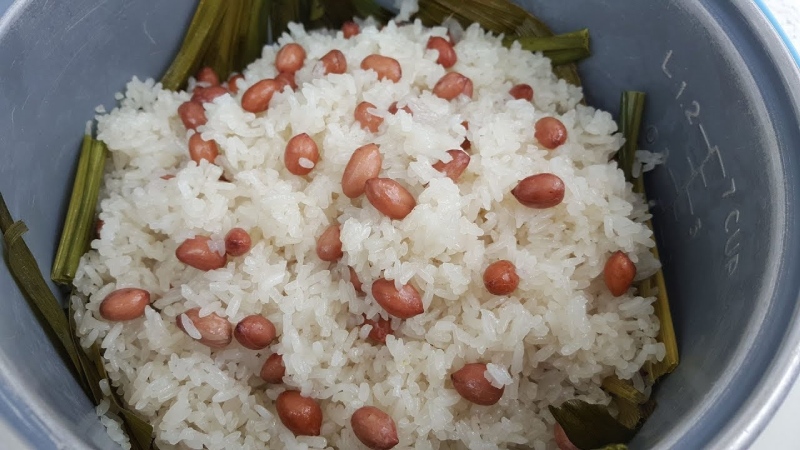 Advantages of Cooking Xôi in a Rice Cooker
Advantages of Cooking Xôi in a Rice Cooker
Disadvantages of Cooking Xôi in a Rice Cooker
-
Prone to Mushiness: Due to the difficulty in precisely controlling the water ratio and temperature as in other cooking methods, xôi cooked in a rice cooker can easily become mushy, especially when cooking large portions. Pay attention to the water ratio and adjust the cooking time to avoid this issue.
-
Prone to Burning: If the water ratio is not adjusted properly, the xôi may burn at the bottom of the cooker. Insufficient water can cause burning, while too much water can lead to mushy xôi. Monitor the water level and adjust it during cooking to ensure even cooking and prevent burning.
-
Limited Options: Rice cookers are suitable for cooking xôi with certain ingredients and may not be ideal for special types of xôi like colorful xôi (xôi ngũ sắc), purple yam xôi (xôi lá cẩm), or gac fruit xôi (xôi gấc).
-
Doesn’t Retain Flavor: Xôi cooked in a rice cooker tends to dry out and lose its delicious flavor quickly due to the high temperature. To maintain moisture and flavor, store the xôi in an airtight container or use a damp cloth to keep it soft and fragrant for longer.
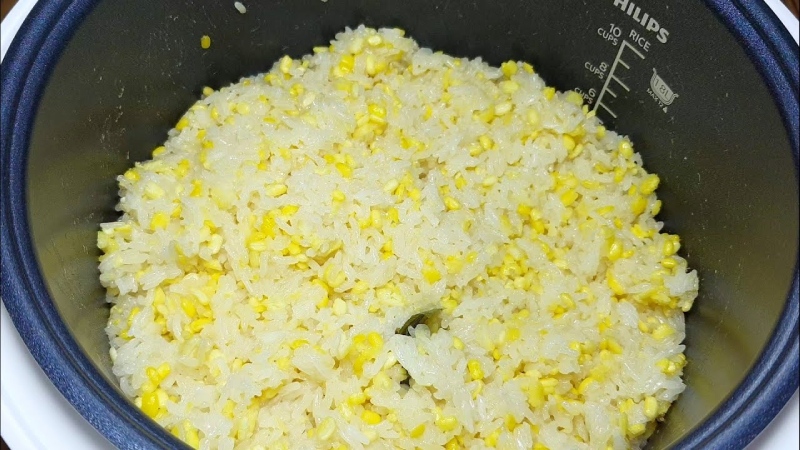 Disadvantages of Cooking Xôi in a Rice Cooker
Disadvantages of Cooking Xôi in a Rice Cooker
2 Pressure Cooker Method
The pressure cooker method is favored by many for its convenience, speed, and ability to produce tasty, sticky xôi. Pressure cookers save cooking time and deliver evenly cooked, soft, and sticky grains without requiring much effort.
Related: Quick and easy, no need to soak the rice
Advantages of Cooking Xôi in a Pressure Cooker
-
Fast: Pressure cookers significantly reduce cooking time compared to other methods, taking only about 20-30 minutes. The high pressure inside the cooker speeds up the cooking process.
-
Convenient: Like rice cookers, pressure cookers automatically cook the xôi without the need for constant monitoring. Simply add the ingredients, set the timer and cooking mode, and let the cooker do the work.
-
Sticky and Tasty: Xôi cooked in a pressure cooker tends to be stickier and tastier than that cooked in a rice cooker. The pressure cooker retains moisture, resulting in soft and moist xôi without dryness.
-
Versatile: Pressure cookers can handle various types of xôi, from gac fruit xôi (xôi gấc), mung bean xôi (xôi đậu xanh), and coconut xôi (xôi dừa) to colorful xôi (xôi ngũ sắc), among others.
-
Safe: Modern pressure cookers are designed with safety features like pressure release valves and safety locks to ensure a safe cooking experience.
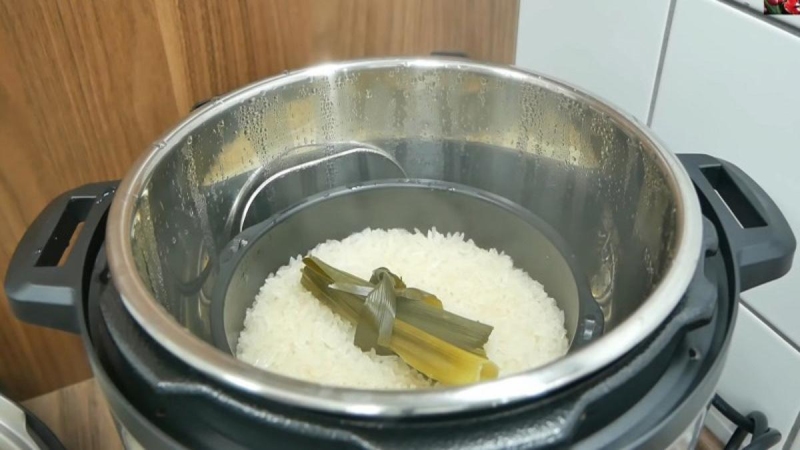 Advantages of Cooking Xôi in a Pressure Cooker
Advantages of Cooking Xôi in a Pressure Cooker
Disadvantages of Cooking Xôi in a Pressure Cooker
-
Limited Adjustability: Pressure cookers typically have automatic cooking modes and offer less flexibility in adjusting cooking times compared to other methods. If you want to achieve different levels of softness, you may need to experiment a few times to find the ideal cooking time.
-
Prone to Mushiness: Adding too much water can result in mushy and unappetizing xôi. Therefore, be cautious when adding water and ensure the amount matches the volume of rice.
-
Higher Cost: Pressure cookers tend to be more expensive than rice cookers.
-
Bulky: Pressure cookers are usually bulkier and take up more space in the kitchen than rice cookers.
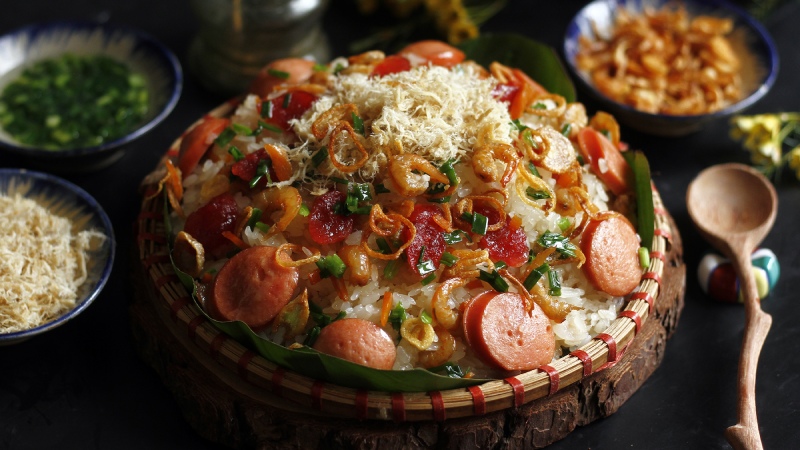 Disadvantages of Cooking Xôi in a Pressure Cooker
Disadvantages of Cooking Xôi in a Pressure Cooker
3 Steamer Method
The steamer method is a traditional way of cooking xôi that is loved for its delicious, soft, and sticky results, as well as its ability to retain the nutrients in the rice. However, this method requires more time and effort than using a rice cooker or pressure cooker.
Related: Delicious, soft, and sticky xôi, just like from a restaurant
Advantages of Cooking Xôi in a Steamer
-
Retains Flavor: The hot steam from the steamer cooks the xôi evenly, preserving the natural flavor of the rice and other ingredients.
-
Soft and Fragrant: Xôi cooked in a steamer is typically soft, fragrant, and sticky, without the dryness or grain breakage that can occur with rice cooker methods.
-
Nutritious: Steaming xôi helps retain the nutrients in the rice, making it a healthier option.
-
Versatile: Steamers can handle various types of xôi, including gac fruit xôi (xôi gấc), mung bean xôi (xôi đậu xanh), coconut xôi (xôi dừa), and colorful xôi (xôi ngũ sắc), among others.
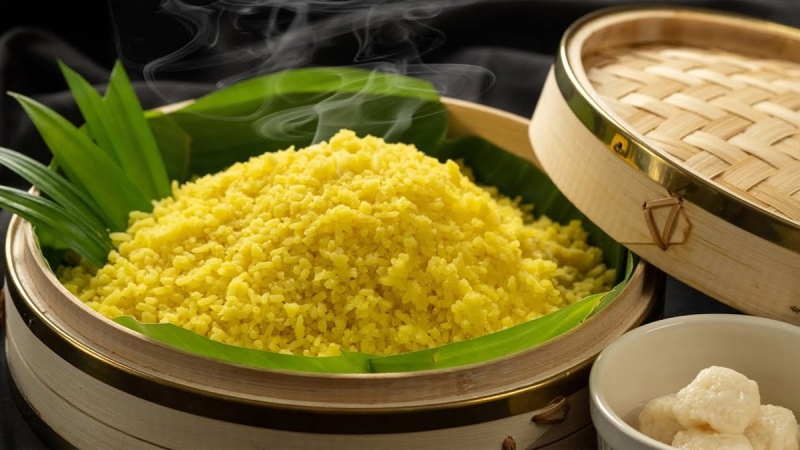 Advantages of Cooking Xôi in a Steamer
Advantages of Cooking Xôi in a Steamer
Disadvantages of Cooking Xôi in a Steamer
-
Slow Cooking: Steaming xôi usually takes longer than using a rice cooker or pressure cooker. This method is suitable for those who have a relaxed cooking pace.
-
Time and Effort: Cooking xôi in a steamer requires more time and effort than other methods. You need to prepare the ingredients, rinse and soak the rice, arrange it in the steamer, and monitor the process.
-
Heat Adjustment: To ensure even cooking and optimal results, you need to monitor and adjust the heat during steaming. Too much heat can burn the xôi, while too little can result in undercooked xôi.
-
Less Convenient: Steamers tend to be bulkier and take up more space in the kitchen than other cookware.
 Disadvantages of Cooking Xôi in a Steamer
Disadvantages of Cooking Xôi in a Steamer
Each xôi cooking method has its own set of advantages and disadvantages, catering to different needs and preferences. Additionally, you can combine methods to create the best xôi according to your taste. For example, you can rinse and soak the rice using a rice cooker and then cook the xôi in a pressure cooker or steamer for more evenly cooked and sticky results.
Cooking xôi is an art that requires patience and attention to detail. Each cooking method has its pros and cons, and the best approach depends on individual needs and preferences. We hope this article has helped you understand the different ways to cook xôi using a rice cooker, pressure cooker, or steamer, enabling you to choose the right method and create delicious, sticky xôi for yourself and your loved ones.
Cook the Perfect Carrot Soup for Babies That Moms Will Love – Ready in No Time!
The recently released GREEN Electric Machine pressure cooker will help mothers cook carrot soup and provide their children with the nutrients they need to keep their eyes healthy. The pressure cooker will make it easier to whip up this nutritious snack that can provide kids with vitamin A supplements for improved vision.
The GREEN Electric Machine pressure cooker has just been unveiled, providing mothers with a convenient way to prepare carrot soup for their children. This healthful snack can give kids the vitamin A supplements they need to prevent eye diseases, promote healthy eyesight, and enjoy a delicious meal.
Preparing Delicious Cakes with a Rice Cooker
Tempt your taste-buds with the exclusive recipe from Dien May XANH- sponge cake made with just five simple ingredients and a rice cooker! Learn how to make this delicious loaf now.
























